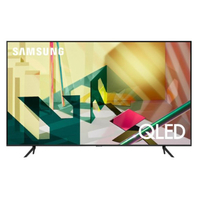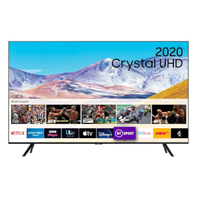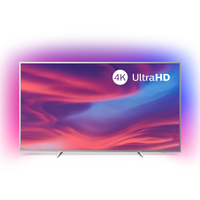TechRadar Verdict
The Samsung Q70 QLED is a mid-range 4K TV model that benefits from a direct backlight and local dimming, resulting in an excellent picture performance. A comprehensive smart platform and cutting-edge features complete what is an impressive overall package.
Pros
- +
Excellent picture quality
- +
Great HDR performance
- +
Cutting-edge features
Cons
- -
No Dolby Vision
- -
No Dolby Atmos support
- -
Not great for wide viewing angles
Why you can trust TechRadar
The Samsung Q70 QLED TV came out in mid-2019. At the time, it was a more affordable option compared to Samsung's flagship Q90 OLED TV, with wide viewing angles, deep blacks and superior HDR images.
Although it's cheaper, the Samsung Q70 OLED is a solid TV. It has a direct QLED backlight and local dimming. Granted, you don’t get the ultra-wide viewing angles, black filter or One Connect box found with Samsung's more expensive models.
But you do get all that excellent AI processing. In fact, apart from those three missing features, the Q70 boasts most of the same features and comprehensive smart platform as its more expensive siblings.
The question is, does this midrange model hit the QLED sweet spot for those with limited funds? Especially considering it's now been around for a few years. Read our Samsung Q70 QLED TV review below to find out.
If you're looking for newer Samsung models, take a look at our best Samsung TVs guide or check our our best TVs guide if you're not beholden to Samsung.
Samsung Q70 QLED review: price and release date
- Released in 2019, so might be hard to find
- Available in 55, 65, 75 and 82-inch sizes
The Samsung Q70 QLED was released in 2019. It comes in five screen sizes—a 49-inch, 55-inch, a 65-inch, a 75-inch and an 82-inch variation. All of which are available in the US and UK.
As usual, the model names vary depending on where you live. If you’re in the UK, you’ll find the QE49Q70R (£1,499); QE55Q70R (£1,699); QE65Q70R (£2,199); QE75Q70R (£3,499); and QE82Q70R (£4,799).
While, in the US, customers will have the option of the QN49Q70RAFXZA ($1,249); QN55Q70RAFXZA ($1,499); QN65Q70RAFXZA ($2,199); QN75Q70RAFXZA ($3,299); and QN82Q70RAFXZA ($4,499).
Unfortunately, Australia AV fans can only pick between three versions of the TV, all of which are called the Q75R there. That said, expect to find the QA55Q75RAWXXY (AU$2,899); QA65Q75RAWXXY (AU$4,099); and QA75Q75RAWXXY (AU$5,899).
Since it was first released, the Samsung Q70 QLED has been significantly reduced, so you might find one for a bargain. However, because it's an older model you might struggle to get one in most retailers.
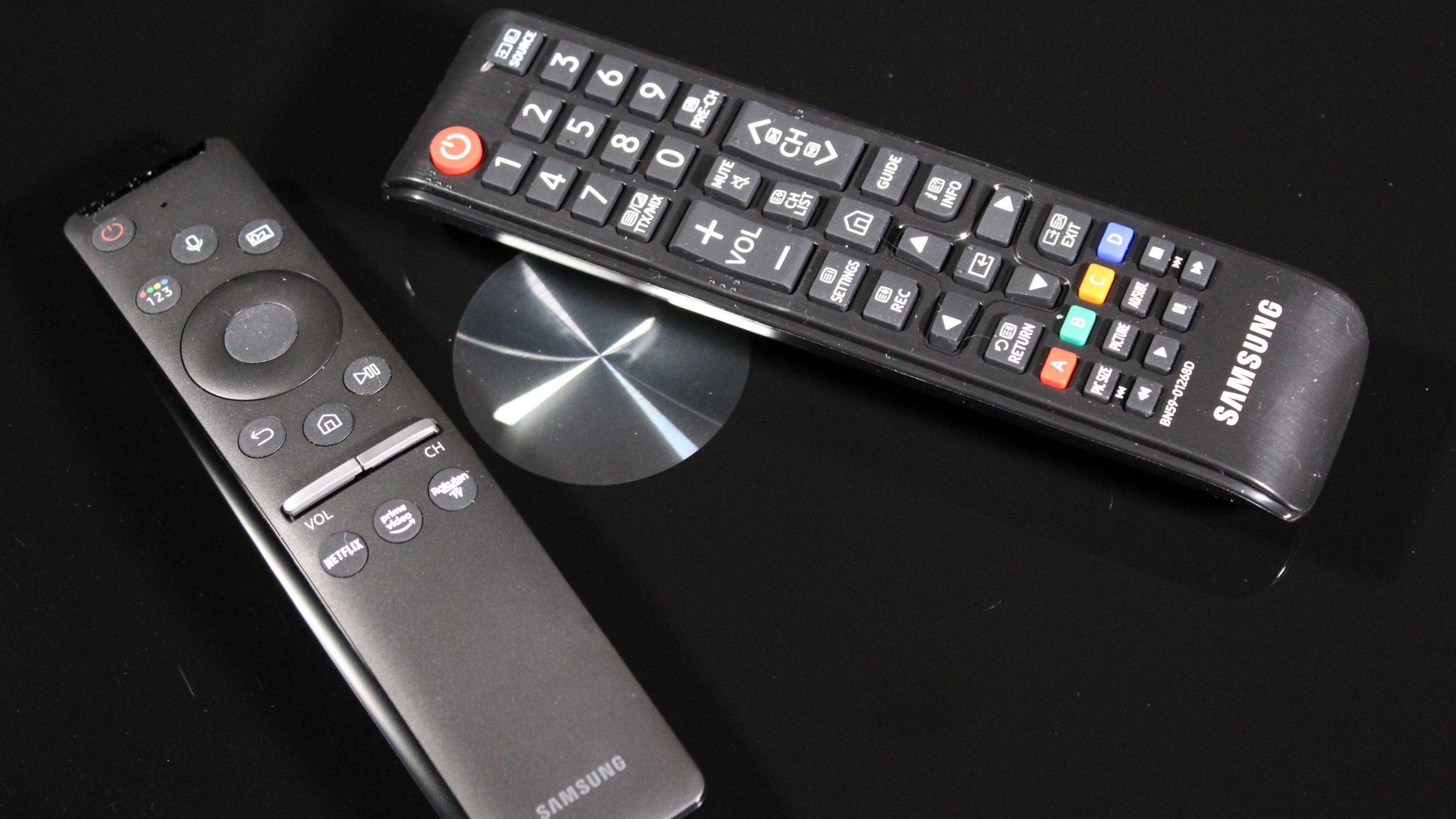
Samsung Q70 QLED review: design
- Functional, not flashy
- Wide feet might be tricky during installation
- Good remote
Screen Sizes: 49-, 55-, 65-, 75-, and 82-inches | Tuner: Freeview HD, satellite HD | 4K: Yes | HDR: Yes | Panel technology: QLED | Smart TV: Yes | Curved: No | Dimensions: 1231 x 780 x 248mm (WxHxD) | Weight: 18.5kg | 3D: No | Inputs: 4xHDMI, 3xUSB, 2xRF, optical, Ethernet, CI slot
The Samsung Q70 QLED looks functional rather than flashy, and while it retains the same basic styling as the rest of Samsung's 2019 QLED range, it also reflects the lower price point.
While it uses a lot of plastic, the design still has the 360-degree detail ethos used elsewhere in the line-up: that means a virtually bezel-less screen, a black border around the outer edge, and textured grooves at the rear.
Samsung has adopted a more traditional stand further up the QLED range, but the Q70 uses metal feet that simply slot into place (no screws). These feet are wide apart, which means you’ll need a fairly big surface on which to place the TV, and that issue is only going to be compounded when dealing with the larger screen sizes (as we mentioned earlier, the Q70 goes up to 82 inches).
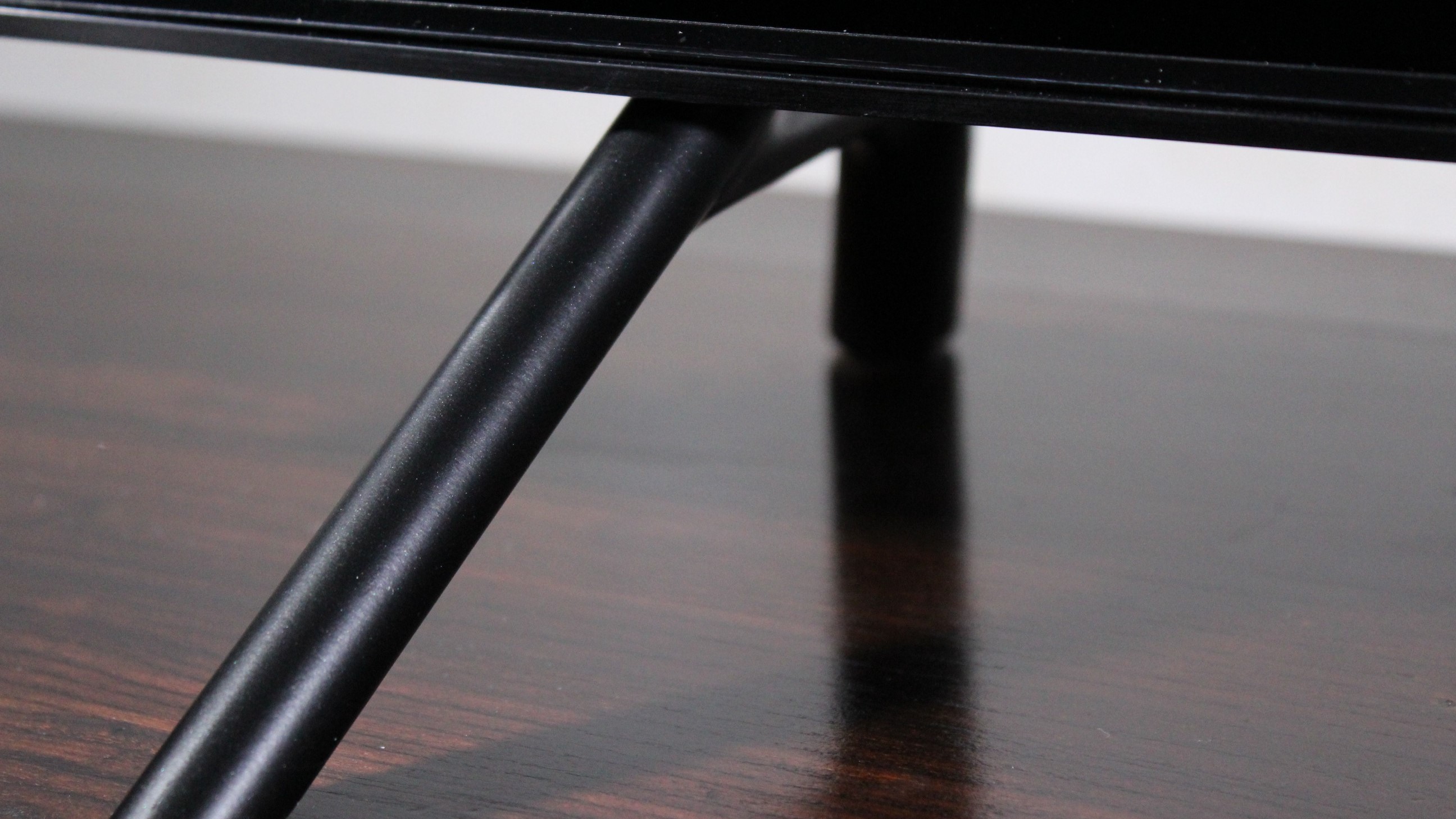
Importantly, there’s no One Connect box here, either. Instead all the connections are located at the rear right of the panel as you face the screen. However at least there’s a full complement of inputs, including four HDMI, three USB, twin terrestrial and satellite tuners, CI slot, optical digital input, auto cal connector, and LAN port for a wired connection (along with built-in WiFi and Apple AirPlay 2).
Samsung has resisted the temptation to embrace HDMI 2.1, claiming the current 2.0b inputs do all that is needed of them. That might disappoint some, but the company claims the Q70 can handle 4K at up to 120Hz, dynamic metadata (HDR10+), variable refresh rate (VRR), and auto low latency mode (ALLM). The only thing missing is enhanced audio return channel (eARC), but Samsung says that will be coming via a software update by the end of the month.
You don’t get the snazzy metal zapper included with the more expensive models, but you still get two controllers: a fully-specced remote and a more basic wand designed for day-to-day use. The latter is comfortable to hold and easy to use with one hand, and includes a built-in mic for voice control, along with direct access buttons for Netflix, Amazon and Rakuten.
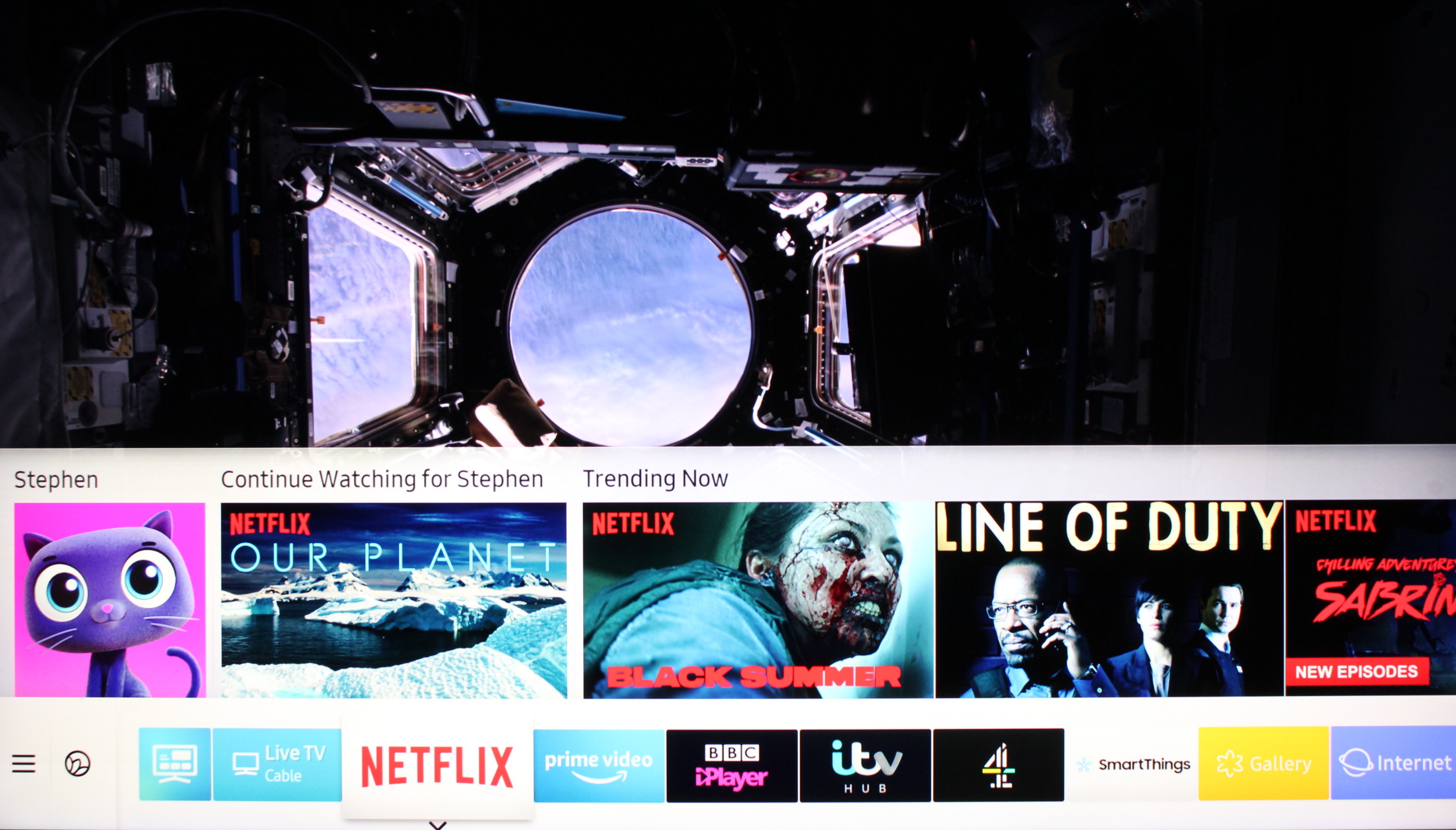
Samsung Q70 QLED review: smart TV platform
- Same smart platform as pricier models
- Lots of apps
- Bixby is built-in
The Samsung Q70 uses an identical smart TV platform to the other models in the QLED range, based around the Tizen-powered operating system. So you get the same launcher bar along the bottom as seen in previous years, and the useful second layer that provides easy access to other content (a feature that LG has copied on webOS this year).
If you want to use your TV to watch video streaming services (and why wouldn’t you?), you’ll be delighted by the comprehensive choice available. Samsung has the lot, with apps for Netflix, Amazon, Now TV, Rakuten, YouTube, and all the UK TV catch-up services. There's even a brand-new iTunes app that just hit the platform earlier this month.
Perhaps in recognition of the fact that owners face a bewildering array of choice, Samsung has introduced the Universal Guide. This feature is specifically designed to collate all the available games, movies, sports, and streaming services into a single user-friendly interface.
The guide then uses AI wizardry to monitor your viewing habits, creating a single ‘For You’ page with content tailored to suit your particular tastes. The more time it has to analyse your behaviour, the better the recommendations become, and it does work very effectively. However, there’s no individual log-in, so unless you live alone the analysis will be based on multiple users.
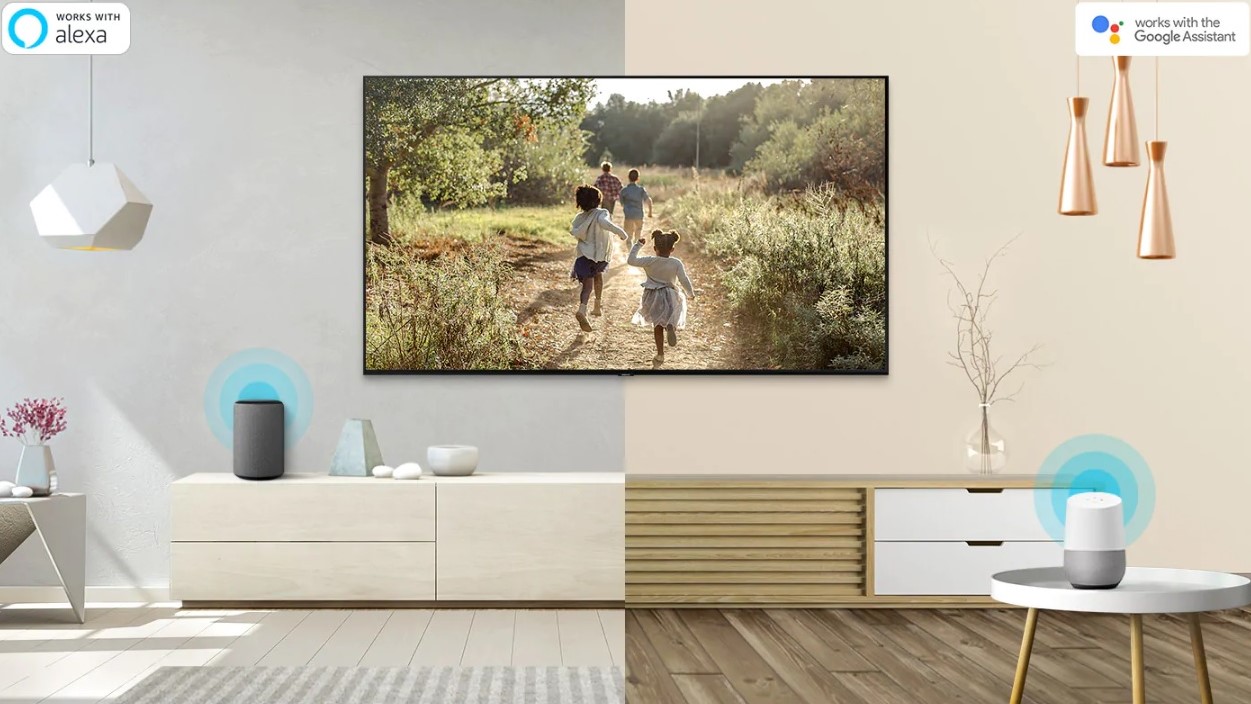
Installing the Q70 couldn't be easier thanks to SmartThings—the handy app enables you to quickly and easily set-up your TV using your smartphone (it's available for both iOS and Android). SmartThings also allows you to use your TV as a smart hub, enabling you to sync, share, and control other connected devices in your home.
Samsung’s QLED TVs are compatible with Amazon Alexa, Google Assistant, and thanks to the inclusion of Apple’s AirPlay 2 even Siri. This year Samsung has also built its own Bixby smart assistant into its TVs, giving the Q70 compatibility with a full house of AI-enabled assistants.
Since Bixby is actually built into the TV, rather than simply working with another device that includes a smart assistant, the experience is largely seamless. Bixby is best accessed by simply pressing the mic button on the remote. There is a near-field mic built into the TV but we’d recommend turning that off, unless you want Bixby springing into life every 10 minutes.
The Q70 also includes Samsung’s Ambient mode. This feature allows you to make use of your TV, even when you’re not watching it. The mode uses minimal power and displays info like the news and weather, or even artwork and family photos. It can also blend in with the surroundings, which is very cool when the panel is wall mounted.
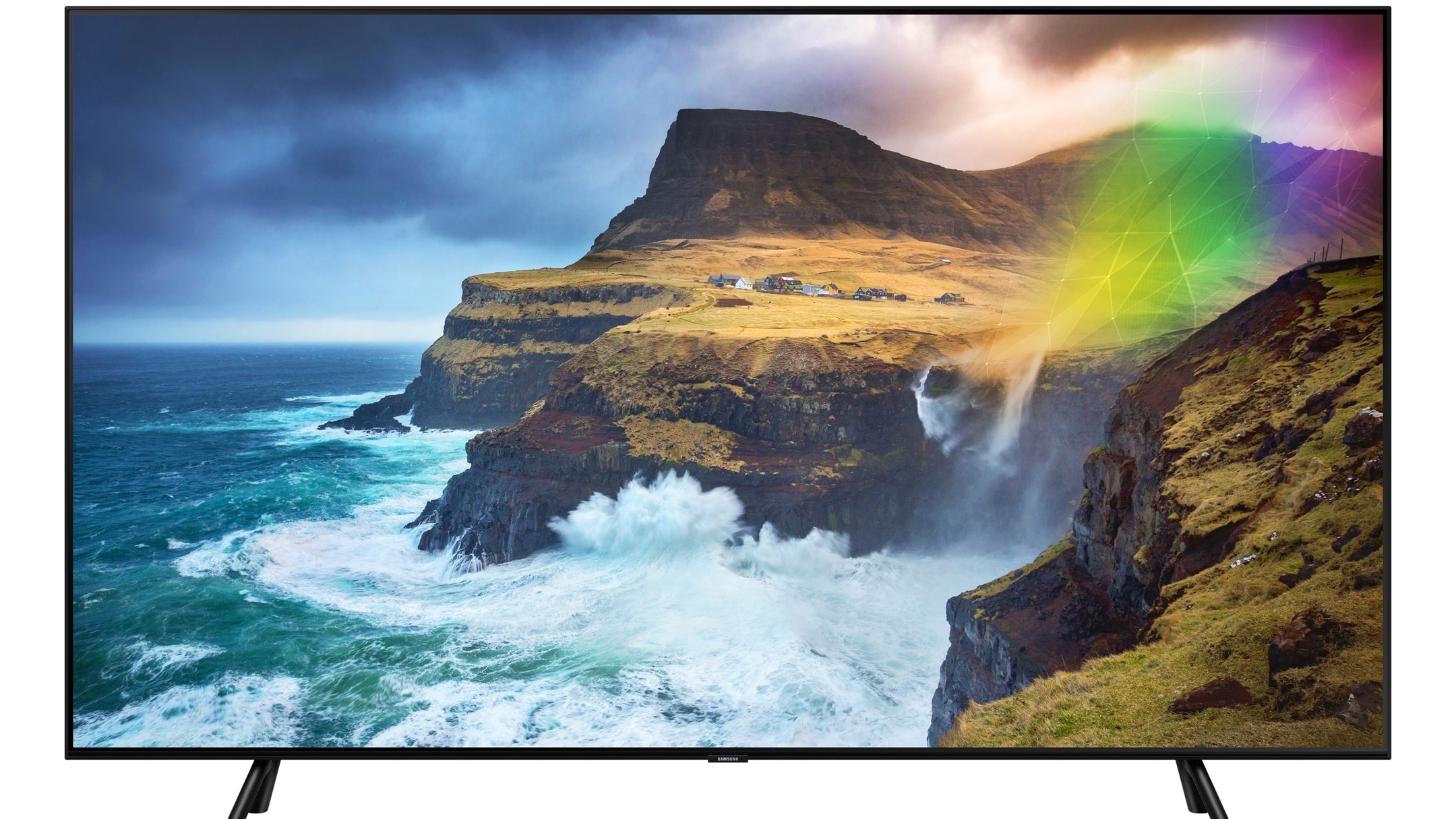
Samsung Q70 QLED review: HD/SDR performance
- Not great for wide viewing angles
- Local dimming mostly fine
- Good for TV and movie fans
The Samsung Q70 delivers an excellent performance in terms of SDR picture quality, and while it might not have the ultra black filter found on the more expensive models, as long as you don’t put this TV opposite a strong light source that shouldn’t be an issue. Besides, the Q70’s bright and punchy images look great even when there is ambient light in the room.
The viewing angles aren’t as wide as the higher up models, but as long as you’re sat reasonably central that won’t be a problem either. Thanks to the VA panel, direct backlight and local dimming, the black levels are impressive and there’s plenty of detail in the shadows. We only counted about 50 zones, but Samsung’s superb local dimming algorithm remains highly effective regardless.
We often use Gravity as a test for local dimming, because the star fields and bright white space suits are a real challenge. In general the Q70 handle this difficult material well, with very little haloing, blooming or clipping. However there were a couple of occasions where the local dimming was caught out, although with the less challenging content that was rarely an issue.
Regardless of the material it was the detailed nature of the picture was readily apparent, with the AI-enhanced processing cleaning up more compressed content, and teasing every last pixel out of lower resolution material. The panel has plenty of brightness, and the colours are saturated but accurate, giving the images real pop.
The motion handling is also good for an LCD TV, even without resorting to frame interpolation. However if necessary the motion settings smooth things out, often proving useful with sporting action where there’s a lot of movement. We measured the input lag at 14ms, which is great news for gamers, especially as there’s no danger of image retention or screen burn.
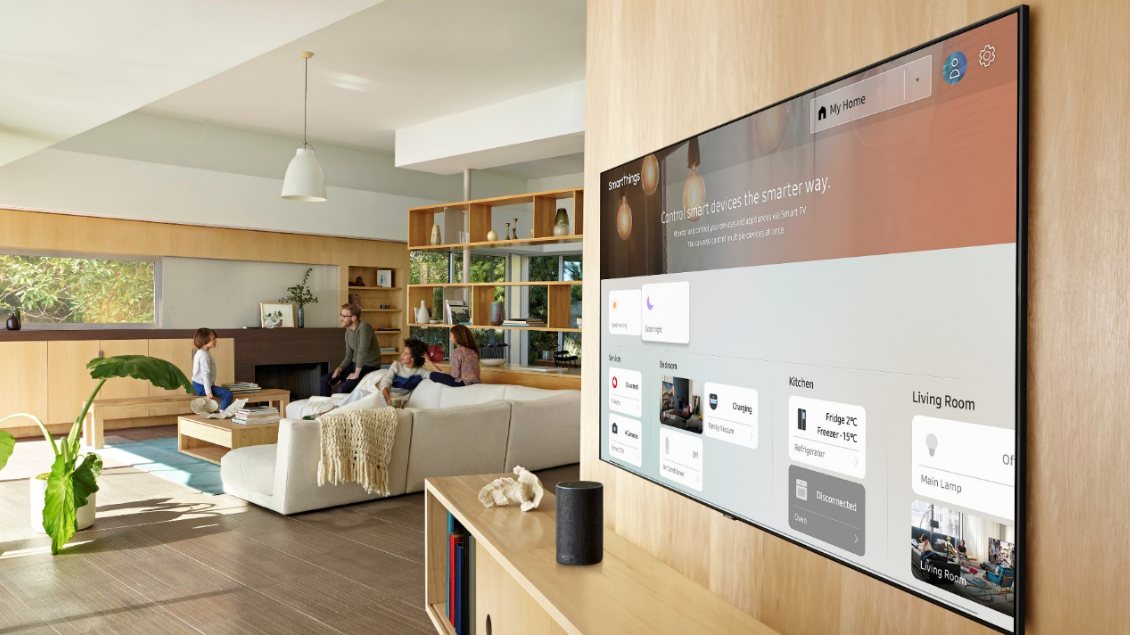
Samsung Q70 QLED review: 4K/HDR Performance
- Solid HDR performance
- Brightness tops out at 800nits
- Blooming is an issue
The Samsung Q70 produced some lovely HDR images... even if it isn’t as impressive as its more expensive siblings.
One thing's for sure: It certainly isn’t as bright, topping out at 800nits in its most accurate picture mode. However the tone mapping makes sure the peak highlights are delivered as accurately as possible. It also covers almost 100% of the DCI-P3 colour space, ensuring that the HDR images make full use of all those extra colours.
The blacks are still black, even with the backlight and contrast controls maxed out, and the brightest whites are free of clipping. However the limited number of dimmable zones is more obvious with HDR, and blooming is certainly an issue with more challenging content. Having said that, the local dimming is still surprisingly effective and HDR images still have plenty of impact with the Q70 making full use of its 4K panel.
A show like Star Trek: Discovery looks bright and colourful in HDR, even though it’s not actually in 4K. The same goes for Jack Ryan on Amazon, which is in 4K and also also looks stunning thanks to its HDR10+ dynamic metadata. Pop on an Ultra HD Blu-ray like Aquaman and the screen is awash with comic book primaries, while the HDR10+ encoding on the new Alien 4K disc means you won’t miss anything nasty lurking in the shadows.
Unfortunately Samsung still doesn’t support Dolby Vision, a proprietary version of HDR that also uses dynamic metadata. This puts the Q70, and company’s entire range of TVs for that matter, at a disadvantage to models from Panasonic and Philips, who both support Dolby Vision and HDR10+. However missing features aside, the Samsung Q70 delivers a solid HDR performance.
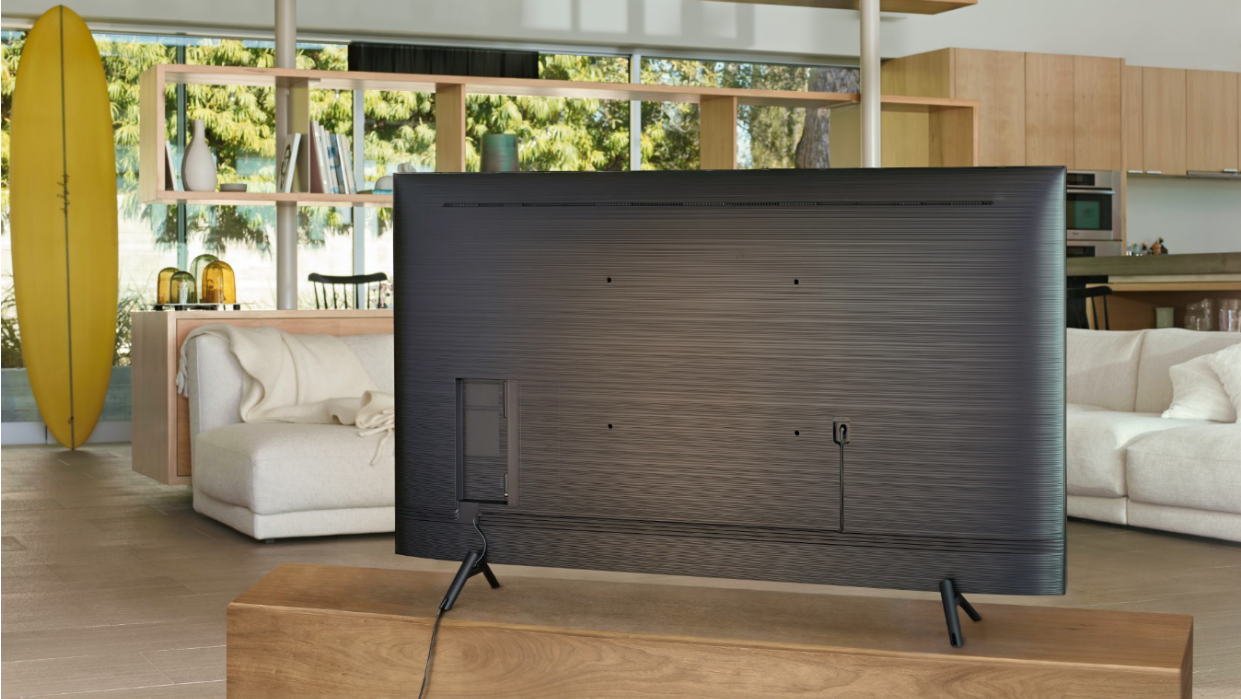
Samsung Q70 QLED review: sound
- Basic sound quality is adequate
- Sonic boost thanks to AI enhancements
The Samsung Q70 sounds fairly good for a modern TV, in part thanks to its direct LED backlight requiring a deeper chassis. That means there’s slightly more room in which to install a decent set of speakers, even if they are still downward-firing. There’s a good sense of stereo separation, a solid midrange, and well-defined treble, but the bass is fairly limited.
Samsung has tried to boost the sound quality of its TVs this year through the application of some machine learning. The result is the AI-enhanced Intelligent Sound mode that analyses the audio based on the environment and content, and the optimises it accordingly. As a result the sound has more width and depth, creating an acoustic experience that is more defined and immersive.
The AI processing ensures that dialogue is clear, music more defined, effects more precise, and crowd noises more enveloping. The Q70 doesn’t support Dolby Atmos, but it is capable of sending Dolby Atmos from built-in apps like Netflix and Amazon to supporting soundbars and AV receivers via the HDMI audio return channel.
Conclusion
The Samsung Q70 is a solid mid-range model that offers a taste of QLED’s potential without the higher price tag. The panel may lack the black filter and wider viewing angles of the pricier models, but it can still deliver a bright and punchy image.
Moreover, the AI-enhanced image processing is equally as effective, helping to make heavily compressed and low resolution content look better and the local dimming is particularly impressive, especially given the limited number of zones available. Feed the TV a 4K signal, however, and the results are often excellent. The sound quality isn’t bad either, thanks once again to some sonic AI wizardry, and the 14ms input lag is sure to please gamers.
Despite sitting lower down in the QLED line-up, the Q70 includes the same comprehensive smart platform, extensive connections, and cutting-edge features found further up the range. This isn’t the flashiest-looking TV that Samsung has ever made, but if your funds are limited the Q70 is a cracking QLED all-rounder that’s worth checking out.
Also consider...
If our Samsung Q70 OLED review has you considering other options, here are three other TVs for you to take a look at.
Samsung Q70T QLED TV
A year newer than the Q70 we're reviewing here, the Q70T offers the same high-end upscaling and image processing as its more expensive stablemates. It's a tempting buy for next gen gamers and bright-room viewers who are looking for an affordable display—especially if you can find it discounted now it's a few years old.
Read our full Samsung Q70T QLED TV review
Samsung TU8000
The Samsung TU8000 TV is a good value TV that offers a decent performance for the money, but can’t shake some of the limitations of its more humble spec list. Brightness and colour saturation take a knock compared with Samsung’s pricier QLEDs, but its detailed picture, fantastic smart TV system and strong upscaling performance still offer plenty to like.
Read our full Samsung TU8000 review
Philips The One (PUS8506 / 2021)
The Philips PUS8506 provides a good picture, decent sound and easy connectivity at a great mid-range price—plus there's Philips' Ambilight tech here too. The majority of buyers will find this TV a superb all-round package, much like the Samsung Q70 but it's newer and we think even better value for money.
Read our full Philips The One (PUS8506 / 2021) review
- First reviewed in May 2019.
- Get the best deal on Samsung products with our Samsung promo codes.

Stephen is a freelance reviewer with over ten years experience writing for all the major tech publications. As a lifelong film fan he’s embraced the evolution of home entertainment over the decades, and as a professional audio and video calibrator he’s able to keep abreast of the latest developments and innovations. When not reviewing the latest products, Stephen can be found obsessing over how to cram a bigger screen and more speakers into his own home cinema.

